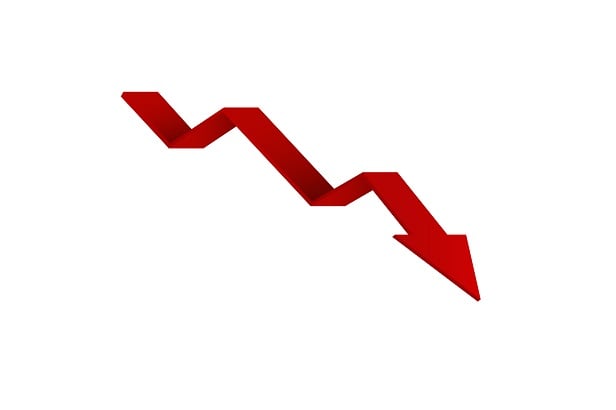NEW YORK—The percentage of commercial real estate deals that fell apart in March rose sixfold from the average failure rate, according to a recent post by Real Capital Analytics. This weakness accelerated throughout the first quarter, but the worst is likely yet to come, writes SVP Jim Costello.
On average from 2016 to 2019, such deals were only 0.4% of the total number of deals that closed in a single month. In March, this figure climbed to 1.3%.
One reason for the failed deals have been mismatched price expectations. As Costello notes, price discovery for commercial real estate assets can be a long process and there are a number of steps that buyers and potential sellers will go through before adjusting their expectations following an economic shock. "Deals that fail to close and a reduction in market players are leading indicators for changes in market pricing," he writes.
Granted, the 1.3% failure rate is not huge, Costello continues, and it also reflected the decline in the number of deals that closed. "But the writing on the wall signals changes in price expectations. A rising number of busted deals shows that participants saw the growing economic calamity and realized that the assumptions they had in place for transactions no longer worked," he writes.
Multifamily Developers Stand Firm on Discounts
A separate survey conducted during the week of March 30 by Institutional Property Advisors points to similar trends. IPA surveyed some of the largest developers of multifamily communities in the US, representing 597 projects in development totaling 187,000 units.
It found that 64% of developers said that they would only accept a discounted pre-sale price of less than 5% from their estimated valuation. However, developers are less positive about current pricing of entitled land parcels, as the majority would be looking for steep discounts to make a purchase today. 44% of developer responses said that they would need a discount of 11 to 20% to close on a development site compared to pre-crisis pricing, and a quarter of the responses said they would need a 21 to 30% discount.
A Shrinking Buyer Pool
Costello also noted in his post that another growing signal of weakness in the market is the shrinking of the buyer pool. On average from 2016 to 2019, the US market saw 2,100 unique buyers of commercial property each month. This figure retreated throughout Q1 2020 and stood at only 790 buyers in March.
The drop in this figure points to a decline in market liquidity, Costello writes. "With fewer participants to look at a deal when it is brought to market, a seller is less likely to achieve the pricing they were hoping for in a transaction, as bidding simply will not be as competitive."
Multifamily Developers Project Short-term Disruption
The Institutional Property Advisors survey also reported a pause in deals, but in this case it was attributed to capital sources reluctant to move forward with transactions.
63% of the responses see a three-to-six month holding pattern as investors digest the economic and financial fallout from the pandemic, IPA found. The next highest number of responses at 15% foresee the hiatus lasting more than six months.
It is interesting to note that 28% feel that delays that push back projects opening by 3 to 6 months could actually be advantageous if the crisis subsides by the third quarter, just in time for potential pent-up demand for apartments to be released.
Overall, developers in the IPA survey appear to be signalling that they see the crisis as a short term operational issue for properties still under construction or in lease-up. In addition, they see their ability to begin sourcing new deals and raising capital as being only temporarily on hold.
© Touchpoint Markets, All Rights Reserved. Request academic re-use from www.copyright.com. All other uses, submit a request to [email protected]. For more inforrmation visit Asset & Logo Licensing.








